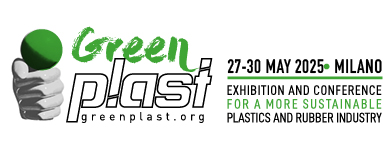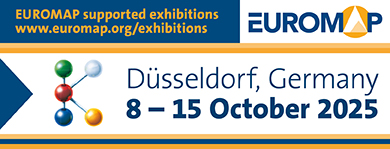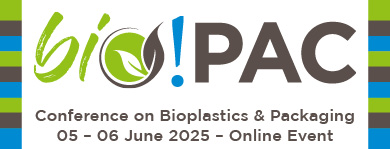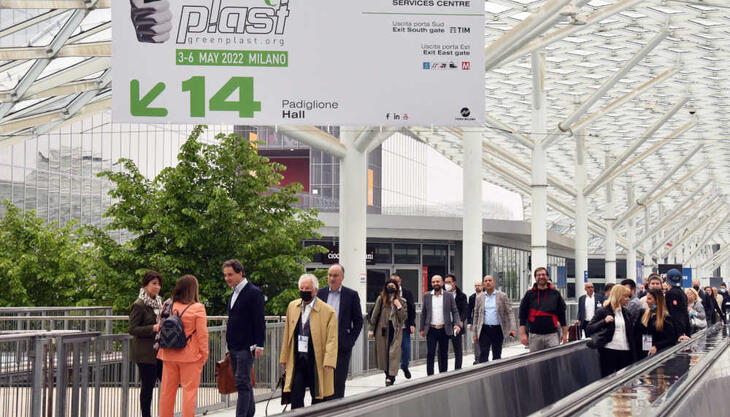Green, smart, advance

Green, smart, advance are the three keywords for most of the industries nowadays, including but not limited to plastics and rubber industries. Green is the commitment for circular economy and sustainability. Smart can inspire innovations and enhance user experience. Advance is the powerful tool for improving productivity and quality. At Chinaplas 2023, to take place from 17 to 20 April in Shenzhen World Exhibition and Convention Center (SWECC), Shenzhen, China, visitors will for sure immerse in these three hot technologies under one roof, helping inspire new ideas and explore new opportunities.
Intensifies innovations towards a circular economy
There is no denying that plastics consumption - especially for single-use plastics - has created a huge challenge to our environment. Plastics industry now spares no effort to intensify innovations towards a circular economy for sustainability development. The plastics industry has long been applying the linear model, or “take-make-dispose” approach. Circular economy concept aims to reduce the amount of plastic waste generated by applying a “closed loop” system, redesigning how plastic products are taken, made, used and reused to alleviate the plastic waste problem.
One of the main thrusts of circular economy is the increased rate of recycling. Post-industrial waste and post-consumer waste need to undergo recycling in order for them to be re-used. Recycling technologies have seen tremendous improvements in terms of speed, efficiency and cost-saving advantages. Under the theme "A Brighter and Shared Future, Powered by Innovation", Chinaplas 2023 will provide visitors with a whole spectrum of sustainable solutions in three theme zones, including Recycled Plastics Zone, Bioplastics Zone, and Recycling Technology Zone. With over 14,000 sqm, more than 200 machine makers and materials providers are to showcase latest environmental-friendly plastic materials and processing technologies.
 Plastics and rubber industries go smart
Plastics and rubber industries go smart
Industry 4.0, has created a remarkable impact on the production of a huge range of products. Plastics industry, yet having a history of 160 years, also goes smart with cutting-edge technologies for greater efficiency and cost reduction in the era of Industry 4.0. Through digitalization, manufacturing systems for plastics industry have become much more intelligent. The adoption of smart manufacturing process in all aspects of production - from product design, actual production, supply chain, distribution and sales, and delivery - has made it possible for companies to withstand current and future challenges.
Digitalization has been increasingly applied particularly in plastics production processes. There is growing need for advanced machinery and auxiliary equipment, sensors, process control software and other products to transform a plastics production facility into a smart manufacturing plant. In the rising trend of digitalization among plastics and rubber industries, Chinaplas 2023 will bring together almost 330 solution providers around the world in Injection Molding and Smart Manufacturing Solutions Zone with over 60,000 sqm. Besides international big names, plenty of leading Chinese suppliers are about to showcase full array of smart manufacturing solutions and machines at the theme zone, to facilitate the adoption of smart solutions and technologies and achieve the targets of digital manufacturing transformation.
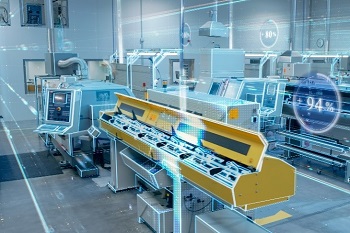 Advance: automation and 3D printing
Advance: automation and 3D printing
Automation and 3D printing are the two key enablers for technology advancement. Despite the perception that robots will take the jobs of humans, automation in the plastics industry is not a zero-sum game to decide between an all-human workforce or an all-automated one. A number of plastics processes can apply automation. Investing in automation would be a means to do more with the equipment plastics manufacturers currently have. In the medical devices industry, for example, manufacturer may use automated process to insert plastic parts into a medical component, and measure the cavity pressure to ensure the parts are properly insert.
3D printing, or additive manufacturing, market has seen a tremendous growth and innovation since it is first invented in the early 1980s. After the expiration of a key patent in 2009, allowing many technology companies to offer low-cost consumer-level 3D printers, 3D printing is no longer a niche technology. The global 3D printing plastics market reached 786.9 million dollars in 2021 and is expected to grow at a CAGR of 23.9% from 2022 to 2030. Personalization products development and government incentives, coupled with the rising demand from the end-user industries such as automotive, medical, and aerospace, shall boost the market to expand further over the coming years. Not to mention the advanced automation and robotics technologies in the Injection Molding Solutions Zone, a 3D Tech Zone will also be set up in Chinaplas 2023. At the theme zone, visitors shall discover new 3D printing materials, technologies and hardware from solution providers.



